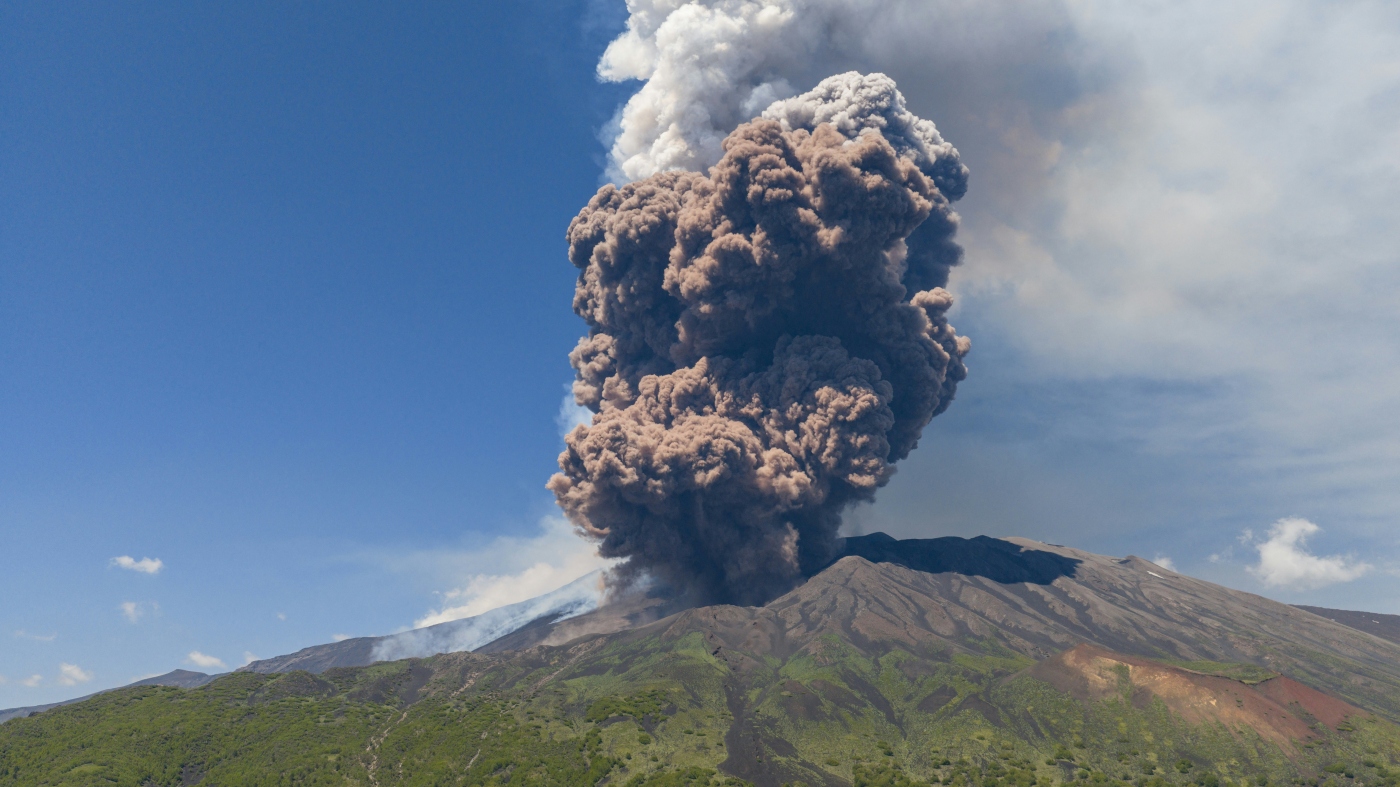The Dramatic Eruption of Mount Etna: An Explosive Display in Sicily’s Skies
Mount Etna, Europe’s largest and one of the world’s most active volcanoes, unleashed a spectacular and powerful eruption on a recent Monday, captivating onlookers and causing a stir among tourists and authorities alike. This volcanic event was marked by a towering plume of ash and smoke, fiery lava fountains, and seismic tremors, all combining to produce a natural spectacle that both awed and alarmed.
The Scale and Nature of the Eruption
The eruption originated from Mount Etna’s southeastern crater, where a partial collapse appeared to have triggered an explosive release of volcanic materials. The ash cloud rapidly ascended to approximately 21,300 feet (6,500 meters), or around 4 miles into the sky, stretching high above Sicily’s horizon. This massive plume was composed of ash, volcanic gases, and rock fragments, creating a dense smoke column visible for miles.
Photographic and video footage disseminated through social media showed the enormous volume of smoke and ash expanding into the clear blue sky, accompanied by vivid images of glowing lava fountains illuminating the volcanic summit. This fiery spectacle was not only a visual testament to Etna’s power but also a reminder of the volatile geology beneath Europe’s largest island.
Impact on Local Communities and Visitors
Despite the dramatic visuals, officials reported that the eruption posed no immediate danger to the resident population. Authorities raised the alert status at Catania airport, located near the volcano, but there were no immediate disruptions to air traffic. The ash cloud, while impressive, was being monitored carefully to prevent hazards associated with ashfall, such as respiratory issues or visibility problems.
Tourists caught near the volcano, however, experienced a more direct and urgent impact. Many fled the slopes as the eruption intensified, driven by the hot gases, ash fall, and the potential for flying volcanic debris. Such reactions underscore the unpredictable nature of volcanic activity and the need for vigilance in volcanic tourism zones.
The Science Behind Etna’s Activity
Mount Etna’s eruptions are driven by complex subterranean processes linked to the tectonic movements around the African and Eurasian plates. Seismic tremors detected around 10:00 pm local time gradually escalated into a peak eruptive phase just before 1:00 am, signaling the imminent eruption.
Volcanologists credit the partial collapse of a sector of Etna’s southeastern crater with precipitating this explosive activity. This structural failure allowed built-up volcanic gases and molten lava beneath the surface to escape violently, propelling ash and debris skywards. Regular monitoring by Italy’s volcano department and international observatories enables early detection of such patterns, helping in risk assessment and public safety measures.
Mount Etna’s Role on the European and Global Stage
As Europe’s largest active volcano, Mount Etna holds both scientific and cultural significance. It is a focal point for volcanological studies due to its frequent activity, accessibility, and the variety of eruption styles it displays—from effusive lava flows to explosive ash emissions. Moreover, its eruptions influence regional air quality, local climates, and geological landscapes.
The recent eruption is one of several Etna experiences annually, reaffirming its status as a persistent source of volcanic activity with the potential to impact nearby population centers and infrastructure. This event also offered a unique opportunity for volcanologists and emergency response teams to test preparedness protocols and public communication strategies.
Looking Ahead: Ongoing Monitoring and Preparedness
While no immediate hazards forced evacuations or closed airports this time, Mount Etna’s latest eruption serves as a potent reminder of the dangers inherent in its proximity. Authorities continue to monitor seismic activity, gas emissions, and ash dispersal closely, seeking to anticipate future eruptions and minimize their impact.
Tourists and residents alike benefit from the detailed risk assessments and the cautionary alerts provided. The interplay between natural beauty and geological risk defines Mount Etna, drawing visitors eager to witness its power while demanding respect for its volatility.
—
Conclusion: Mount Etna’s Fiery Reminder of Nature’s Power
The recent eruption of Mount Etna illuminated the timeless drama of volcanism — a potent combination of destructive force and dazzling spectacle. Towering ash clouds, glowing lava fountains, and the dash of fleeing tourists painted a vivid picture of a landscape perpetually reshaped by deep Earth processes. As a symbol of natural power that commands both awe and respect, Etna’s latest activity underscores the enduring challenge and fascination of living alongside an active volcano. Through vigilant monitoring and adaptive preparedness, Sicily continues to embrace its fiery giant, standing ready for whatever eruptions lie ahead.


